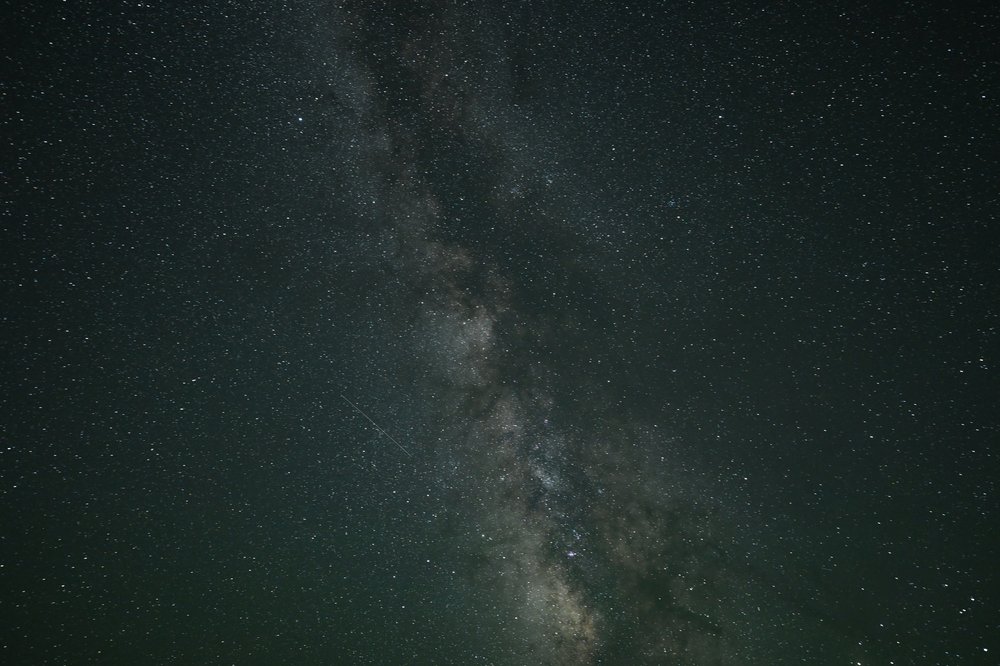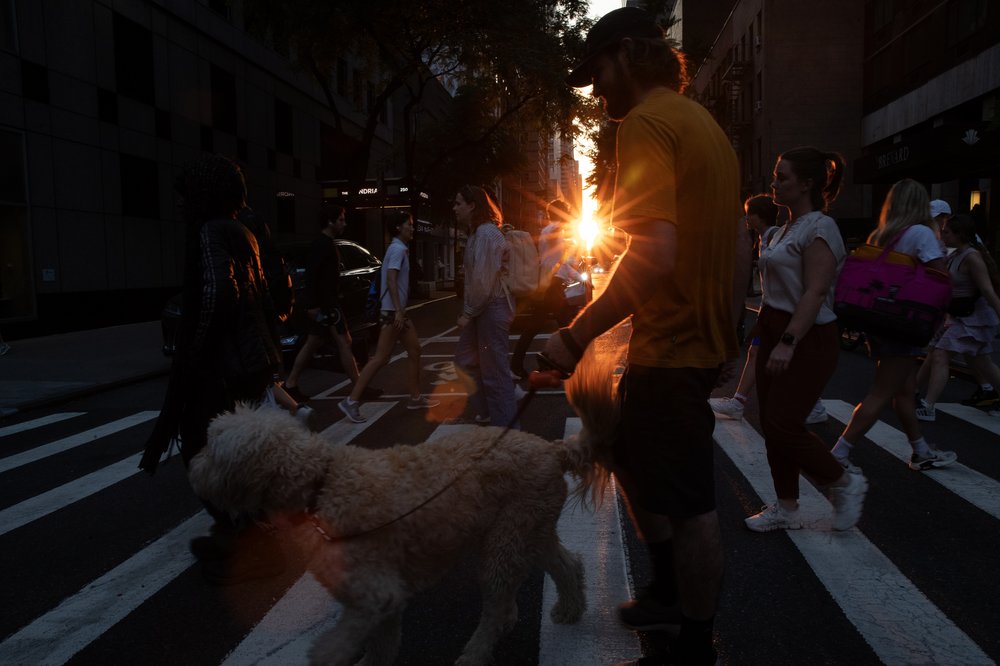Astronomy NYC: July is a stargazer's dream
June 29, 2025, 8:01 a.m.
The month that brings the anniversary of the lunar landing also features great meteor showers and Manhattanhenge's second act.

July is the month for peak stargazing.
During the hottest month of the year, at dusk, New Yorkers can enjoy skyscraper-framed city sunsets with the return of Manhattanhenge. After dark, some of the brightest stars are out, including the three that make up the Summer Triangle: Deneb, Vega and Altair.
Then after midnight in mid-July, a trio of meteor showers, including the Perseids – considered one of the best and brightest – will light up the sky.
”Two major things that are in the sky — that everybody always talks about for the Northern Hemisphere summer — are at their peak, which are the summer triangle and the Milky Way,” said Jackie Faherty, astrophysicist at the American Museum of Natural History.
The first meteor shower, Alpha Capricornids, begins July 12 and runs through August 12. There will be as many five shooting stars per hour during the meteor shower’s peak on July 29. This light show is known to produce very slow bright fireballs, which makes them easy to spot.
Peaking and ending on the same evening, the Southern Delta Aquariids, another meteor shower, begins July 18. This is the faintest of this month’s meteor outbursts with up to 10 sparks per hour that streak very low in the sky, close to the horizon.
The third shower, the Perseids, also begins on July 18. While the Perseids won’t peak until August, sky watchers can see 20-30 in the span of an hour. During the peak, there can be as many as 100 shooting stars that leave long trails of light and color as they streak across the sky.
Sometimes meteors can be tough to spot but on July 24 — 4 days after we celebrate the lunar landing — there is a new moon, which is the darkest lunar phase. During this period, the moon is between the Earth and the Sun, which means the side facing our planet is not receiving direct sunlight. The moon will appear almost invisible, making it an ideal time to spot meteors or go stargazing.
“The fact that we won't have a moon at the end of the month, because the new moon is the 24th, and we have three different meteor showers, I would say go out and look for some meteors,” said Bart Fried, a member of the American Astronomical Society.
The advantage of three overlapping showers is that it increases the chances of seeing multiple fireballs in a short period of stargazing. If pinpointing the shooting star to its meteor shower is important, then pay attention to where the meteor originates in the sky. The Southern Delta Aquariids come from the direction of the constellation Aquarius in the southern part of the sky. The Perseids come from the northern part of the sky from the constellation Perseus. The Alpha Capricornids originate from the constellation Capricornus in the southern part of the sky.
Among the shooting stars are some of the sky’s brightest twinkling lights. Look for Arcturus, a very bright orange-red giant star, in the southwestern sky after sunset. It’s the fourth brightest star visible to us. With binoculars, stargazers can also see the Epsilon Lyrae which is a bright cluster of several stars.
For New Yorkers attending the fireworks on Fourth of July at the Hudson River, Mercury will make an appearance an hour after sunset just above the western horizon. Look for a yellowish dot low in the sky.

One of the most spectacular summer sights is the Milky Way, but New Yorkers will need to get out of the city to see the white band of light stretching across the sky. The brightest part of the strip is the galactic center.
“This is the definitional month for summer observing, because this is the peak of the summer Milky Way being up,” Faherty said.
Manhattanhenge–the phenomenon that happens when the sun lines up with Manhattan's grid– returns this month for its second and last appearance of the year. On July 11, the full sun will line up with the street. On July 12, people will see the top half of the s
un align with the grid. Both days will yield some great photos.
The iconic shot happens around around 8:20 p.m. on both days, but Faherty, who tracks the event for the American Museum of Natural History, recommended getting situated in a good spot by 7:30 p.m.

Manhattanhenge
On July 11, the American Museum of Natural History is throwing a block party with a salsa band on West 79th street, which will be closed from Columbus to Amsterdam Avenues to allow for Manhattanhenge viewing. The free event is open to all ages and begins at 7 pm. The event will be preceded by a ticketed 3D presentation about the science and history behind Manhattanhenge.
In Manhattan, the best views are found looking west from cross streets such as West 72nd Street or West 14th Street. North Brooklyn and Queens waterfront parks also have good views such as Gantry State Park in Long Island City. Bronx residents can take in the highrise-framed sunset in their neighborhoods on streets with an unobstructed view to the Hudson River.
“ It’s the last Manhattanhenge of the season where the sun kisses the grid and then goes under, and then that's it,” Faherty said. “After that, no more grid crossings. This is the goodbye to the sun.”
###
NYC summer stargazing seasons kicks off with triangle, meteor showers